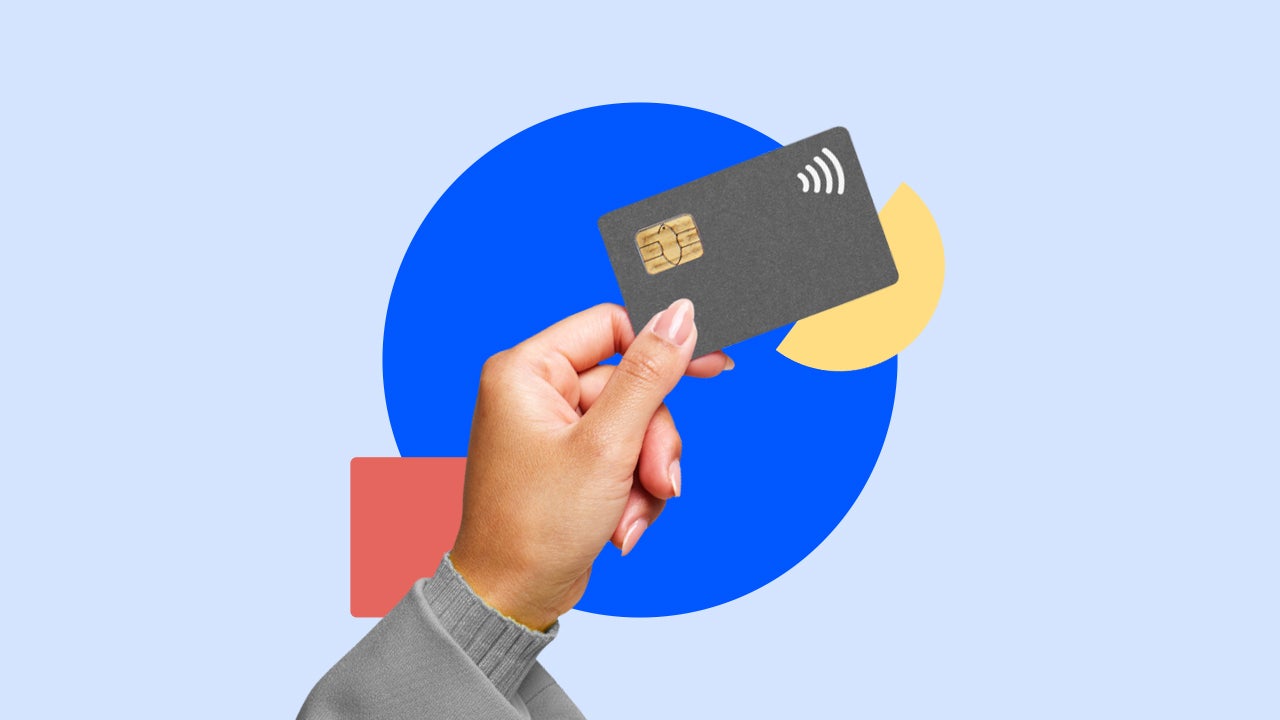2022: Year in review for credit cards

In many respects, it has been a “Goldilocks” kind of year for credit card issuers. As in, not too hot or too cold. Credit card balances surged a record 13 percent year-over-year in the second quarter and another record 15 percent in the third quarter, according to the New York Fed.
Total balances are just a smidge below the pre-pandemic high set in Q4 2019, and rates are at record highs. Yet delinquencies and defaults are well below typical levels and card companies didn’t need to overextend their marketing budgets to acquire new customers. In other words, this year, card companies had their cake and ate it too.
Continuous interest rate hikes
The dominant theme in the credit card world this year, by far, was sharply higher interest rates. At Bankrate, we’ve been tracking credit card rates since 1985, and the current average of 19.42 percent is the highest we’ve ever seen. In fact, in 2022, we observed the steepest single-year increase on record. The average credit card rate has increased 312 basis points (3.12 percentage points) since Jan. 1.
The previous calendar-year record was a 262-basis-point jump in 2010. The explanation back then was different: The CARD Act went into effect in Feb. 2010 and dramatically changed how credit card rates were calculated. Previously, issuers had a lot more latitude to adjust rates. The CARD Act limited issuers’ ability to change customers’ interest rates. The easiest way became to tie rates to an underlying index (typically the Prime Rate, which is three percentage points higher than the federal funds rate set by the Federal Reserve). Issuers add their profit margin on top of that.
Back in 2010, an unintended consequence of the CARD Act was that the floor for credit card rates became much higher. Issuers padded their margins when they enacted the “prime plus margin” variable-rate structure. The average credit card rate was 10.79 percent when President Obama signed the CARD Act in May 2009 and 13.63 percent when it was implemented in Feb. 2010. It ended that year at 14.39 percent. Yet the federal funds rate was effectively zero (technically between 0 and 0.25 percent) that whole time.
This year’s increase is all about the Federal Reserve and its series of interest-rate hikes meant to combat the highest inflation readings in four decades. The Fed has raised the federal funds rate (the rate that banks charge each other for overnight loans) by 425 basis points in 2022.
The average credit card rate hasn’t moved quite that much for a few reasons. First, offers come on and off the market. Additionally, our sample includes many credit unions which can’t charge more than 18 percent by law. And finally, the Fed’s most recent hike (50 basis points) hasn’t had time to filter through the market yet. What’s most important is that there’s a good chance your personal credit card rate will soon be 425 basis points higher than it was at the start of the year.
How higher rates affect you
If you have $5,000 in credit card debt and you only make minimum payments, the jump from 16.30 percent (the national average at the start of the year) to 19.42 percent (the national average right now) adds seven months to your payback cycle and costs you an extra $1,173 in interest. If your rate is 20.55 percent (the initial 16.30 percent plus the 4.25 percentage points in Fed hikes), minimum payments will take you nine additional months and an extra $1,579 to pay off compared with the start of the year.
Obviously, these higher-rate scenarios are getting progressively worse, but to be honest, none of them are pretty. Minimum payments toward $5,000 at 16.30 percent certainly weren’t a picnic. Those would have kept you in debt for 185 months (more than 15 years) and cost you a grand total of $5,517 in interest.
The bottom line is that this Most active credit card accounts (53 percent) carry debt from month to month, according to the American Bankers Association. And 60 percent of people with credit card debt have been in that position for at least a year, up from 50 percent last year.
If you have debt and want to understand the impact of rising interest rates, try plugging your own numbers into our Bankrate’s credit card payoff calculator.
How to pay off credit card debt
If you have credit card debt, my top tip is to sign up for a 0 percent balance transfer card. These allow you to pause the interest clock for up to 21 months. The best way to use one of these is to divide what you owe by the number of months in your promotional term and try to stick with that level payment plan. Don’t add more purchases, even if they’re interest-free, because it’s hard to hit a moving target.
The balance transfer market has remained remarkably stable despite rising rates, which surprises me. I expected issuers to cut back on the number of interest-free months and/or raise transfer fees. Neither has happened, at least among the most attractive balance transfer cards. If anything, the competition has intensified, as Bank of America recently joined Citi and Wells Fargo in offering 21-month interest-free terms on certain cards.
Rewards offers weren’t particularly exciting
Card issuers didn’t make many waves with interesting new rewards credit cards in 2022. Sign-up bonuses were generally good but not great (save for a few short-lived offers such as the Chase Sapphire Reserve® briefly dangling its highest intro bonus in about six years). This marked a stark contrast with 2021, which was a very busy year for card launches and refreshes as the world began to emerge from the COVID-19 pandemic.
Issuers didn’t need to be overly aggressive in 2022. Americans signed up for plenty of cards anyway. The latest data from Equifax, which covers the first eight months of the year, found that banks originated a record 54 million credit cards through Aug. 31. That was 16.4 percent more than the first eight months of 2021, which represented the previous record high.
Credit remained widely available
Despite worries about high inflation and a potential recession, credit is still flowing freely. As of October, just 18 percent of credit card applicants were rejected, according to the Federal Reserve. That’s in line with most of the past decade and down from a peak of 26.3 percent in Feb. 2021.
The Fed’s latest Senior Loan Officer Survey reveals that just 18.8 percent of lenders tightened their credit card approval standards in the third quarter. While that’s up from a mere 2.2 percent in the second quarter, it’s still a distinct minority.
Similarly, credit card delinquencies have begun to tick up slightly from extremely low levels, but they remain well below historical norms.
TransUnion forecasts that serious credit card delinquencies will rise modestly from 2.1 percent at the end of this year to 2.6 percent at the end of 2023. And while the credit bureau believes that credit originations will fall slightly from this year’s record levels, they’re still projected to be the second-highest on record.
Checking in on the regulatory front
After facing a very light touch from regulators during the Trump Administration, the financial industry is currently undergoing a much more thorough examination from the Consumer Financial Protection Bureau and Congress. CFPB Director Rohit Chopra has made fighting “junk fees” a focus of his tenure, and credit card late fees are among the issues in his agency’s crosshairs (along with overdraft fees and the buy now, pay later industry).
Meanwhile, bipartisan legislation known as the Credit Card Competition Act has been introduced in the Senate and in the House of Representatives. Championed by Sen. Dick Durbin, a longtime critic of credit and debit card interchange fees, this bill would give merchants more choice in how credit card transactions are processed. While that seems friendly enough at first glance, upon further inspection, I believe it would be the exact opposite.
As I’ve written previously, I believe the Credit Card Competition Act would greatly limit credit card rewards programs and would line big retailers’ pockets at consumers’ expense. Access to credit would likely be limited and data security would be diminished.
The bill remains in limbo. Durbin and his co-sponsor, Sen. Roger Marshall, have thus far been unsuccessful in their efforts to attach it to the National Defense Authorization Act. This is a common move: attaching smaller bills to high-priority, must-pass legislation. As a standalone, the Credit Card Competition Act is unlikely to come up for a vote anytime soon. Hopefully, that continues, as I believe the bill would be disastrous for everyday Americans.
The bottom line
How long can the “Goldilocks” era continue? We’re starting to see some early signs of potential trouble, but credit card executives are mostly talking about a return to “normal,” as in 2019-ish delinquency levels, as opposed to any sort of credit crisis. The strong job market, which currently boasts an unemployment rate of just 3.7 percent (one of the lowest in 50 years), is a key contributor.
Of course, many of these data points may be lagging indicators as opposed to leading ones, and no one truly knows what lies ahead. But in general, the feeling seems to be that a possible 2023 recession would likely be a mild one. The credit card industry appears poised for further growth and should continue to benefit from secular trends such as the ongoing rise in digital transactions.
Have a question about credit cards? E-mail me at ted.rossman@bankrate.com and I’d be happy to help.
Why we ask for feedback Your feedback helps us improve our content and services. It takes less than a minute to complete.
Your responses are anonymous and will only be used for improving our website.






